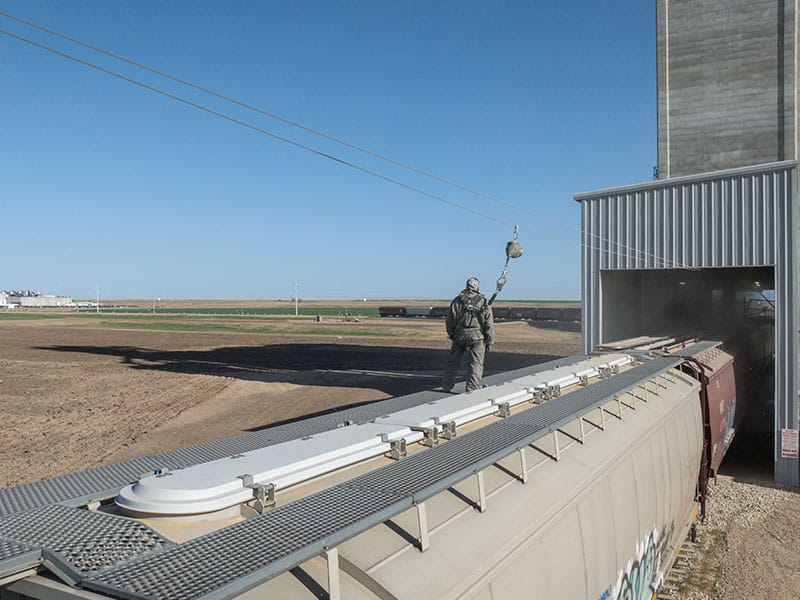The train crew at Garden City Co-op’s River Valley Terminal in Holcomb, Kan., runs like a well-oiled machine. The team can fill or unload a unit train with grain in 10 hours or less.
“We can definitely hit all the incentive times the rail programs require,” says Jeff Boyd, CEO of Garden City Co-op (GCC). Rail carriers often incentivize customers to load and unload trains quickly to enhance rail line operational efficiency. “The ability to quickly and efficiently ship grain benefits our farmer-owners.”
The terminal, with 1.2 million bushels of storage capacity, was built to create more value for owners by capturing additional market opportunities. Located on the BNSF main line, each unit train moves 425,000 bushels of wheat or 450,000 bushels of corn or grain sorghum (milo) to processors. Building the terminal took about four years from concept to completion, Boyd says.
CHS partners with GCC, based in Garden City, Kan., to sell grain to customers in the U.S., Mexico and overseas through TEMCO export facilities in Houston and the Pacific Northwest. TEMCO is a joint venture between CHS and Cargill.
Kealan Griffin, a senior grain merchandiser with CHS and liaison with GCC, says greater speed and volume gives suppliers a market advantage.
“It’s the way the business is evolving,” Griffin explains. “Processors are moving away from single (train) cars and want large shipments to reduce freight cost. Railroads also want to move more volume to reduce costs. A shuttle loader opens markets.”
The highly automated River Valley Terminal uses RFID (radio frequency identification) technology to track each covered hopper car for streamlined loading and unloading. Even with state-of-the-art technology, the process is hard work and communication among team members is critical to load trains efficiently.
In mid-April 2025, just eight months after the River Valley terminal became operational, GCC employees loaded a BNSF train with hard red winter wheat destined for export. Focused on efficiency and safety, the following process is used by GCC team members to load a 116-car train. (The noted personnel were on hand to fill that train, but crews change based on availability and staffing needs at other locations. Multiple backup team members are trained for each loading/unloading position.)
- The BNSF train enters the terminal’s 1.5-mile loop track, which allows the cars to stay connected while slowly moving through the loading process. Then the GCC team takes over. Each member knows his or her role and moves in perfect harmony.
- Joey Lopez, the GCC fleet manager who’s trained to operate BNSF locomotives, drives the train. He maneuvers each car into position in the covered drive-through loading shed.
- Jose Lopez and Angel Flores, terminal co-managers, supervise loading from the shuttle loader office. A large spout is lowered into the rail car to drop in grain. Each car holds about 3,700 bushels of wheat and can be loaded in just over 4 minutes. As wheat pours into each car, Jose Lopez tells Joey Lopez via radio to “move forward” or “stop right there” to make sure the car is filled evenly.
- Wheat is tested for quality and to ensure it meets buyer specifications during loading by Joe Varela, a GCC area grain supervisor.
- Victor Duarte and Hugo Reveles, who manage GCC locations in Lowe and Deerfield, Kan., respectively, carefully walk across the top of hopper cars, cutting plastic seals and opening lids. Each is tethered to a safety cable and harness and dons a respirator. Once cars are filled with grain, lids are closed and new seals are attached. The seals ensure lids stay closed and provide integrity and tamper-evident security of cargo during transit.




